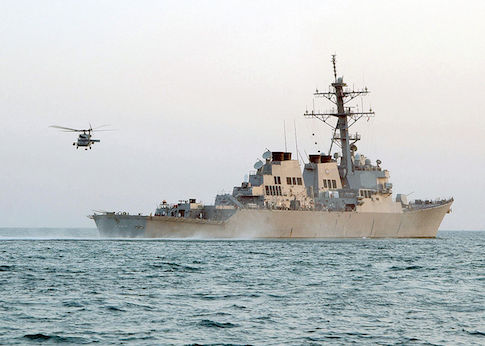Tensions between the United States and China are escalating in the South China Sea, with a recent incident involving the Navy’s USS Hopper drawing attention to the naval power dynamics in the region.

Navy’s USS Hopper Evaluates its Performance Against Chinese Warships Following Recent Maritime Encounter (Photo: CSIS)
China’s Naval Buildup: The Growing Might of the People’s Liberation Army Navy
According to the recent development published by Newsweek, in November 27, 2023, the People’s Liberation Army Southern Theater Command revealed that it had deployed its naval and air forces to track, monitor, and warn away the U.S. destroyer near the disputed Paracel Islands. The U.S. Navy defended the Navy’s USS Hopper’s actions, citing the assertion of navigational rights consistent with international law. This encounter of Navy’s USS Hopper reflects the growing focus on the military capabilities of both nations and raises questions about the evolving balance of power in the strategically vital South China Sea.
China’s significant investments in its naval capabilities, making it the largest naval force globally, have fueled tensions with the U.S. as well as the Navy’s USS Hopper, The People’s Liberation Army Navy (PLAN) boasts approximately 370 ships and submarines, showcasing a substantial numerical advantage.
Recent efforts by China to modernize and expand its naval capabilities, including the construction of advanced surface combatants like destroyers, cruisers, and frigates, have caught the attention of global analysts. The PLAN’s emphasis on quantity and quality poses a challenge for the Navy’s USS Hopper, United States and its allies, requiring a reassessment of their own shipbuilding efforts to maintain strategic superiority.
READ ALSO: Social Security Administration: To What Extent They Provide Financial Stability To Retired Workers?
Assessing the Naval Balance: Challenges in Comparing U.S. and Chinese Vessels
In a recent report released by News Nation Now, while China’s naval fleet grows in quantity and sophistication, assessing its true capability remains challenging. Emma Salisbury, an associate fellow at the Council on Geostrategy, notes the difficulty in comparing Chinese vessels with their U.S. counterparts including the Navy’s USS Hopper due to limited combat operations data and classified training drill information.
Despite China’s advancements, experts argue that the U.S. Navy and the Navy’s USS Hopper maintains a formidable position globally, leveraging its network of bases and alliances. It emphasizes potential future trajectory of U.S.-China naval dynamics, questioning whether China can truly match the U.S. Navy’s extensive global reach and operational experience.
READ ALSO: California Woman Arrested After Allegedly Murdering Her Daughter In Their Orange County Home
























